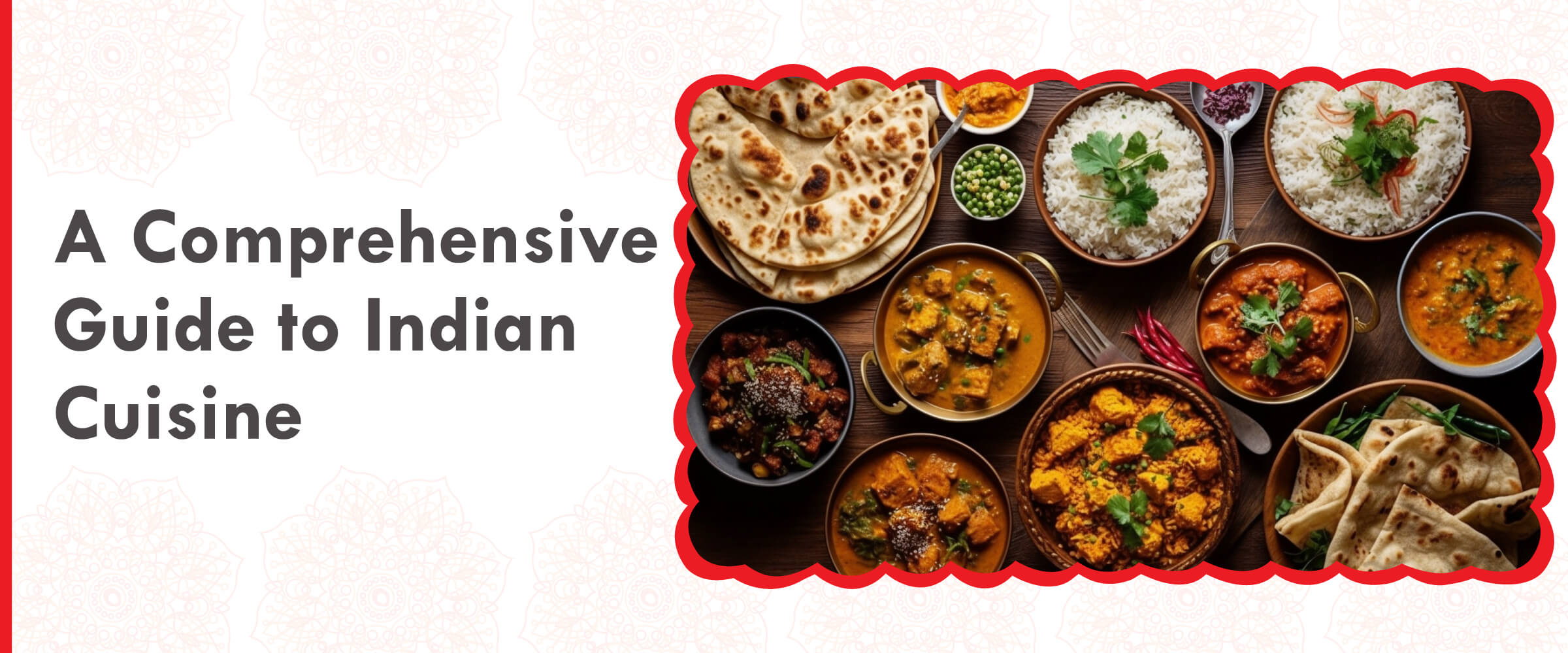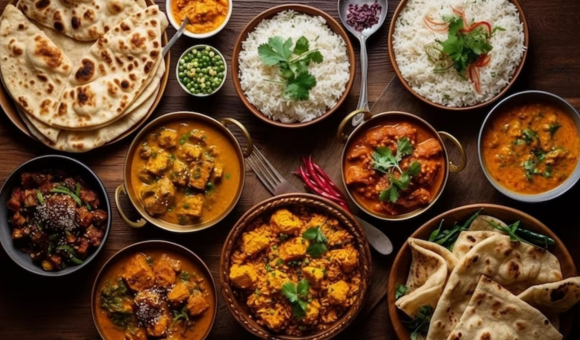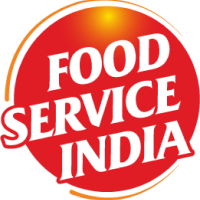
A Beginners Guide To Indian Cuisine
Indian cuisine is considered one of the world’s most diverse cuisines. From deep tropical to alpine, India’s diverse climate has given rise to a rich tapestry of culinary traditions, each region boasting its unique flavours, ingredients, and cooking techniques. Whether it’s the spicy curries of the south, the rich aroma biryanis of the north, or the savoury street food delights, Indian cuisine offers food to suit every taste bud.
With a vast collection of spices, herbs, vegetables, and grains, Indian cooking is like a celebration of colour, aroma, and taste. It reflects the country’s long history, cultural diversity, and deep-rooted traditions, making it a beautiful culinary experience people around the globe enjoy.
In this comprehensive guide to Indian cuisine, we’ve covered the diversity and popular dishes of Indian cuisine. Keep reading to know more.
A] The Diversity of Indian Cuisine
Food plays a crucial part in our daily lives, and depending on the diverse geography the type of food we consume varies. In many countries, people consume eggs, bread, toast, and croissants as a part of their breakfast. But in India, most people eat poha, paratha, idli, upma or some heavy item during breakfast.
Every community and every region from around the world has its own diverse and varied food culture, which is quite distinct from that of the others. The most different characteristic of Indian food is its diverse use of spices. Indian spices include a mix of more than 10 flavours/aromas. Red chilli, black pepper, mustard seeds, cumin, cardamom, cloves, turmeric powder, and saffron are all used frequently in various combinations. In this beginner’s guide to Indian cooking, we’ll discover the rich world of Indian cuisine.
B] Popular Dishes from Different Regions
1. North Indian Cuisine

North Indian cuisine comprises a multitude of regional variations, including Punjabi, Haryanvi, Kashmiri, and Awadhi cuisines. Chopped masala is the common gravy which is used across these cuisines. Here, staple ingredients include wheat, rice, pulses, and dairy products, while spices such as cumin, coriander, and garam masala play important roles in creating delicious flavours. This cuisine has a strong Mughal influence. Additionally, it includes some spicy chaat, mouthwatering kebabs, chicken biryani, and heavenly naan bread.
2. South Indian Cuisine

South Indian Cuisine strikes a perfect balance between delicious flavours and nutrition. It features a variety of dishes centred around fish, rice, and lentil curries like sambar, rasam, and poriyal, which is a dry curry. The spicy and flavorful blend sets the cuisine of this region apart from others. Some of the most popular dishes from South India are made from fermented rice and lentil batter.
If it’s soft and fluffy, it’s called idli, but if it’s thin and crispy, then it’s called dosa. A slightly thicker version of dosa is called uttapams, which are filled or topped with vegetables. These dishes, accompanied by sambhar, rasam, and coconut chutneys, offer a healthy and nutritious meal option any time of the day. To make meal preparation convenient, we provide ready-to-cook gravies for sambar, Chettinad, and salan, ensuring quick and hassle-free cooking. Among our multiple products, our sunbay salan gravy truly stands out. Made with authentic techniques using sesame, peanut, and Hyderabadi coconut, it is free of any preservatives, maintaining the genuine taste and aroma.
3. East Indian Cuisine

The culinary tradition of East India stands out for its simplicity in both ingredients and cooking methods, especially when compared to other regions. Rooted in a rich cultural heritage, seafood and mustard oil are prominent in its cuisine, with many dishes being either steamed or fried.
They use a spice mix called “paanch phoran” with cumin seeds, nigella seeds, fennel seeds, wild celery seeds, and fenugreek seeds. Additionally, East India is renowned for its delectable sweets, particularly rasgulla and mishti doi.
4. West Indian Cuisine

The cuisine found in Western India is perhaps the most varied, showcasing a wide variety of flavours and cooking techniques. In Rajasthan, you can enjoy spicy vegetarian dishes, while in Gujarat, the cuisine offers a delightful sweet Thali experience. Maharashtra’s culinary scene is flavoured with coconut, whereas in Goa, Portuguese influence can be seen in dishes like Vindaloo Curries, boasting a unique blend of vinegar, red chillies, and coconut. Each state promises a culinary journey rich in both history and flavour.
C] What Are the Common Ingredients and Flavours in Indian Cuisine?
Indian food is a mix of different flavours from various regions, each with its special ingredients and tastes. Spices are the key to enriching the aroma of food and tasting delicious.
The Aromatic Base:
The foundation of many dishes is the “holy trinity” – onions, garlic, and ginger. They are sautéed in oil (often infused with mustard seeds) to create a base upon which other flavours build.
The Spice Palette:
The true magic lies in the spices such as cumin, coriander, turmeric, and black pepper powder. They form the core, offering warmth, earthiness, and a touch of heat. Cardamom adds a touch of sweet elegance, while cloves and cinnamon whisper their complex warmth. Chillies bring the fire, ranging from the subtle heat of Kashmiri mirch powder to the searing intensity of Bhut Jolokia. Asafoetida, with its unique aroma, adds depth and complexity.
Regional Variations:
Each region adds its twist to Indian Cuisine. Coconut, curry leaves, and mustard seeds dominate South Indian cuisine, while North India favours yoghurt, cream, and richer gravies. Coastal regions showcase seafood and tamarind, while the East leans towards mustard oil and fermented delights.
What Are Some Common Indian Side Dishes?
Side dishes are a big part of the Indian cuisine. They may add flavour, act as a palate cleanser, or be a crunchy treat to enjoy along with your meal. Nevertheless, they are necessary along with the main course. Here are some commonly served side dishes along with Indian cuisine.
- Achaar: Achaars are served with a variety of cuisines including dal-rice, khichdi, parathas, and puris. Achaars are a sour or sweet blend of various spices made from either a pickled fruit or a vegetable.
- Chutneys: Whether made with tamarind, mint, or tomatoes, chutneys bring a zest to dishes that cannot be matched. They can be served alongside samosas, fritters, parathas, dosas, and so much more.
- Papad: Papads are a thin crispy delight served as a starter or along with the main course. They can be either roasted or fried and are very easy to make.
- Raita: This healthy and tasty condiment perfectly accompanies Pulavs and Biriyanis. Made with diced vegetables mixed with yoghurt, they balance the spice levels of the other dishes.
- Potato Fries: Who does not like crispy fried potatoes? Often served along with rice, potato fries add a hint of umami flavour to your meal.
- Potato Masala: This one-pot dish is easy to make and extremely tasty. Potato Masala can be served as a side dish to paratha, dosa, rice, or even pulavs.
Typical Indian Cooking Utensils
Indian-styled cooking uses a blend of Western and Indian cooking utensils. While Western pots and pans are widely used today, certain cuisines require utensils unique to India. Let us have a look at the utensils that you will find in a typical Indian kitchen.
- Kadai: A kadai is used for stir-frying or deep-frying things like vegetables and meats. It is often compared to a Chinese wok but kadai have a deeper side and a flat bottom.
- Pressure Cooker: The pressure cooker may be a late addition to the Indian kitchen but it has certainly found its place. Pressure cookers are one of the must-have utensils in the kitchen for easy and quick cooking.
- Tawa: A Tawa is a traditional concave pan used to make rotis, parathas, and bhakris. It can also be used to make omelettes and roast vegetables.
- Belan and Chakla: Belan (rolling pin) and chakla (rolling board) are necessary parts of every kitchen serving Indian cuisine. They are used for rolling dough into shape for making rotis, parathas, puris, etc.
- Tandoor ovens: Tandoors are clay ovens used for cooking North Indian dishes like naan or marinated meats. While you may not see a tandoor in every kitchen, if you are operating a North Indian kitchen, it is a must for you.
- Jhaara: A jhaara is a cooking spoon used along with the Kadhai to pick up fried food while straining the oil.
Master Indian Cuisine - Access Our HoReCa Services for Authentic Ingredients!
D] Street Food Delights
Indian street food is diverse and flavorful, with each region having its own specialities and unique flavours. Some of the most iconic street foods in India include chaat, vada pav, and dosa. Chaat is a savoury snack that originated in Northern India and is made with a combination of crispy fried dough, boiled potatoes, chickpeas, and a variety of chutneys and spices. Chutneys act as a taste enhancer and bring out the best in the dish. If preparing the flavourful chutney seems like a task, we offer a range of ready-to-eat chutney options like hari chutney, meethi chutney, achari dip and many others.
Street food is a way for people to connect with their communities and share their love of food. Vendors often use traditional recipes that have been passed down through generations, and that they take pride in. In addition to being delicious, street food is also affordable, convenient and fulfilling.
E] Festive Feasts and Special Occasions
Diwali is celebrated with sweets like gulab jamun, jalebi, and barfi, symbolising prosperity and sweetness in the coming year. During Eid, the aroma of biryani wafts through the air, a dish that signifies togetherness and abundance shared with loved ones. In Bengal, Durga Puja is incomplete without indulging in mouthwatering dishes like mishti doi and sandesh.
Whereas during Holi, homes are filled with the aroma of Gujiya, a sweet dumpling filled with khoya and dry fruits, symbolising the arrival of spring and new beginnings. Makar Sankranti, celebrated across the country, sees the preparation of til ladoo and chikki made from sesame seeds and jaggery, signifying prosperity and warmth during the winter months.
Further Reading:
Conclusion
Here at Food Service India, as a reputed food products supplier, we take pride in our diverse range of Indian ingredients. We understand the importance of spices, cultural diversity, and culinary heritage, and how they infuse food with rich taste and aroma.
Indian food is all about enjoying different flavours, cultures, and traditions that bring us together. Whether it’s the rich smell of Tandoori dishes, chicken biryani or the sweet taste of Gulab Jamun, every dish is special. Whether you love veggies, meat, or street food, Indian cuisine has something for everyone.
As a leading Horeca distributor, we can assist you in sourcing a wide range of high-quality food products to elevate your menu offerings and delight your customers.

Piyush Chhaochharia
Piyush Chhaochharia is the Vice President of Food Services India Pvt Ltd. He has a great sense of entrepreneurship, steadfast commitment, and passion for quality in the food sector. Piyush has played a pivotal role in transforming Food Services India Pvt Ltd into a leading food products supplier, offering a diverse range of high-quality products and services to customers across India. With a background in organizations like PwC and True North, he has played a key role in growing the business and expanding the product portfolio. An avid reader and fitness enthusiast, Piyush continues to drive the company's growth and success.





